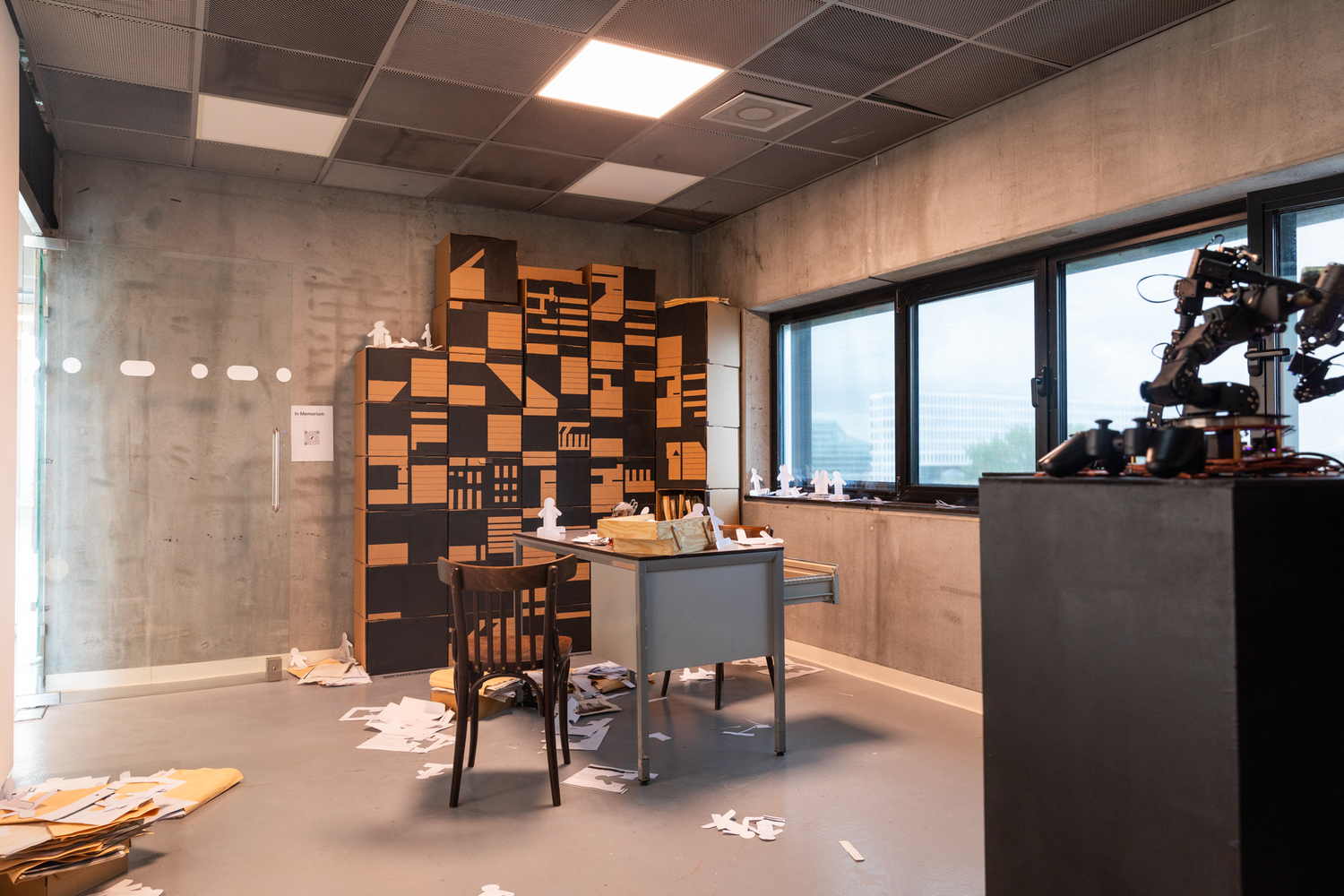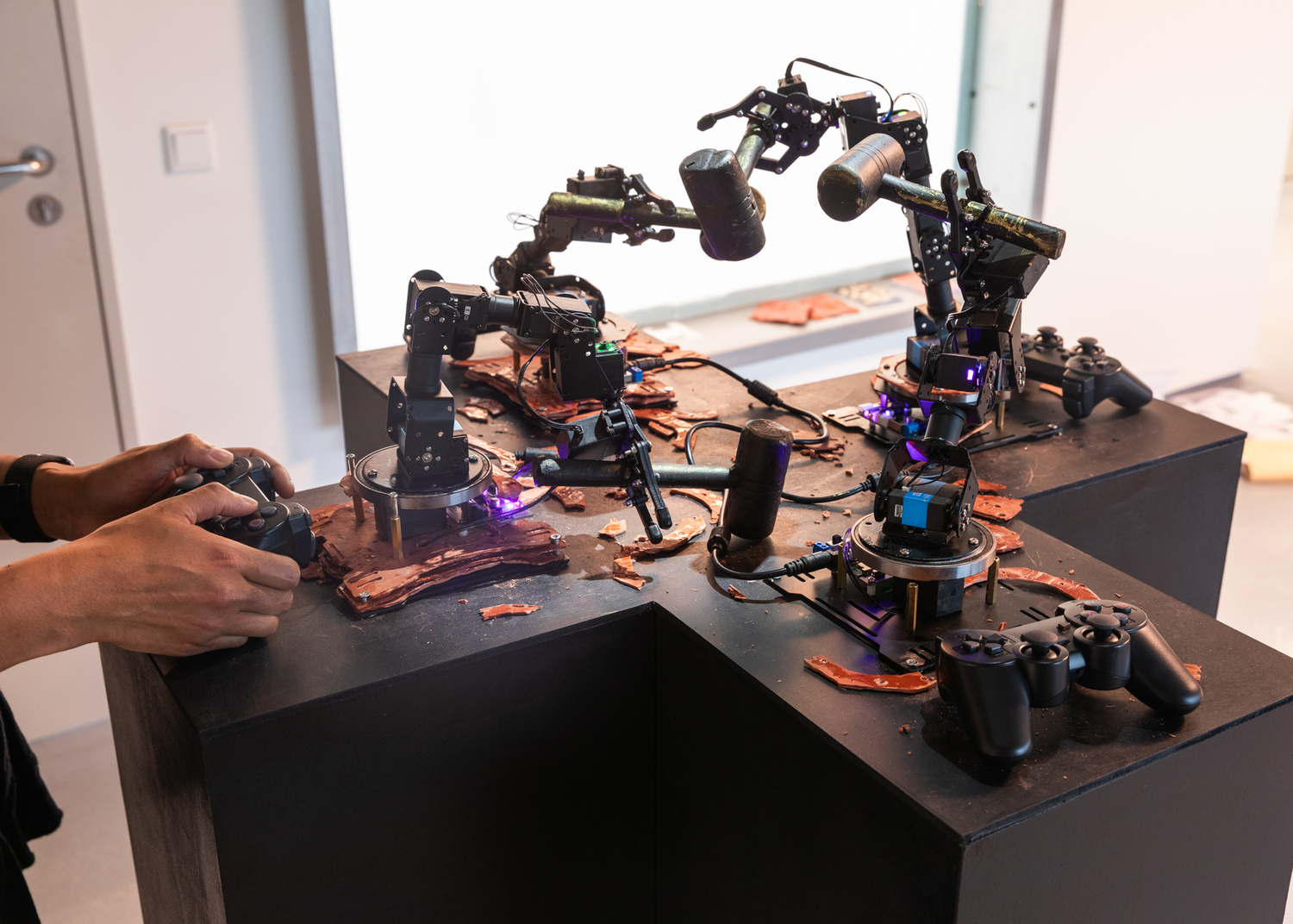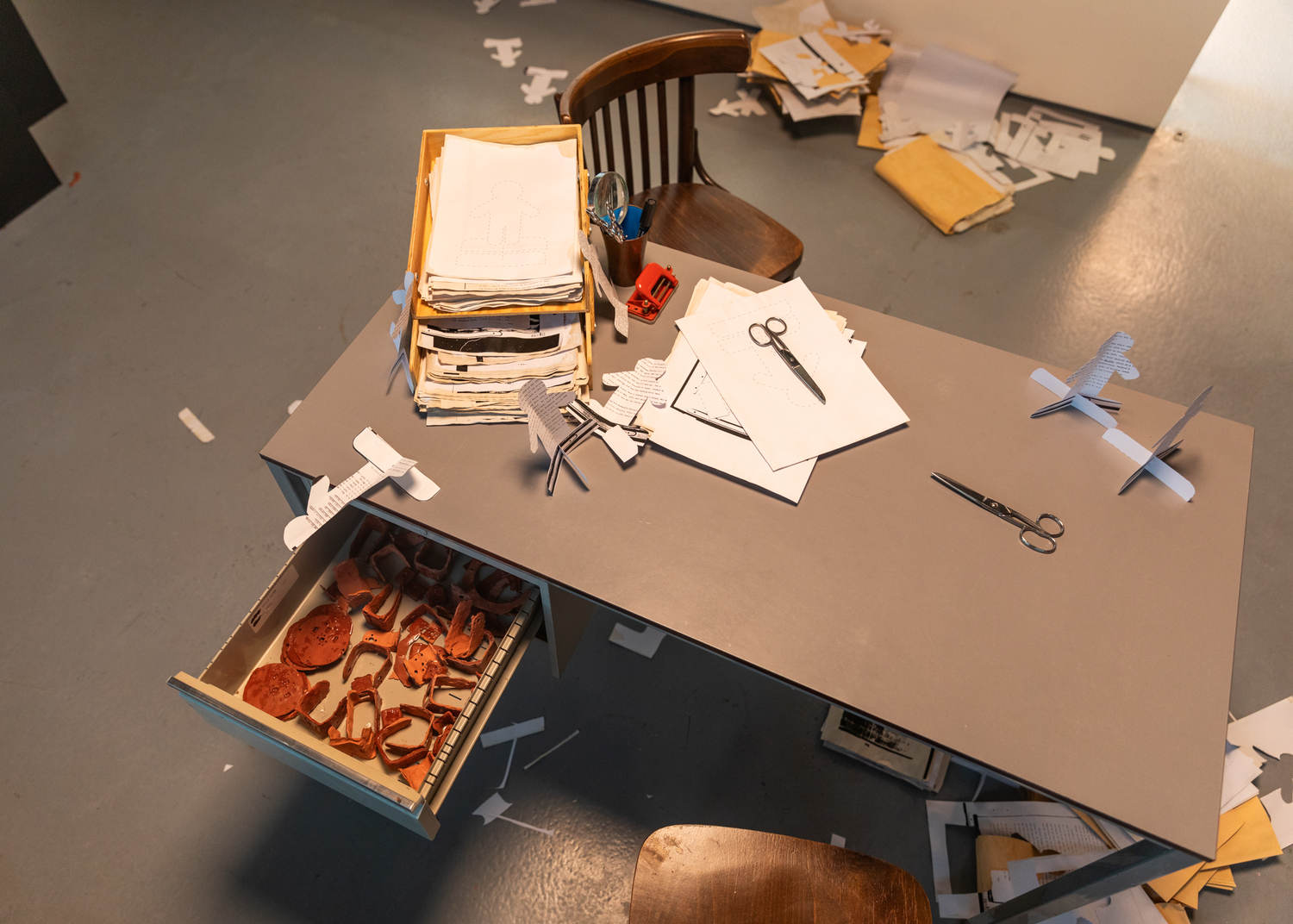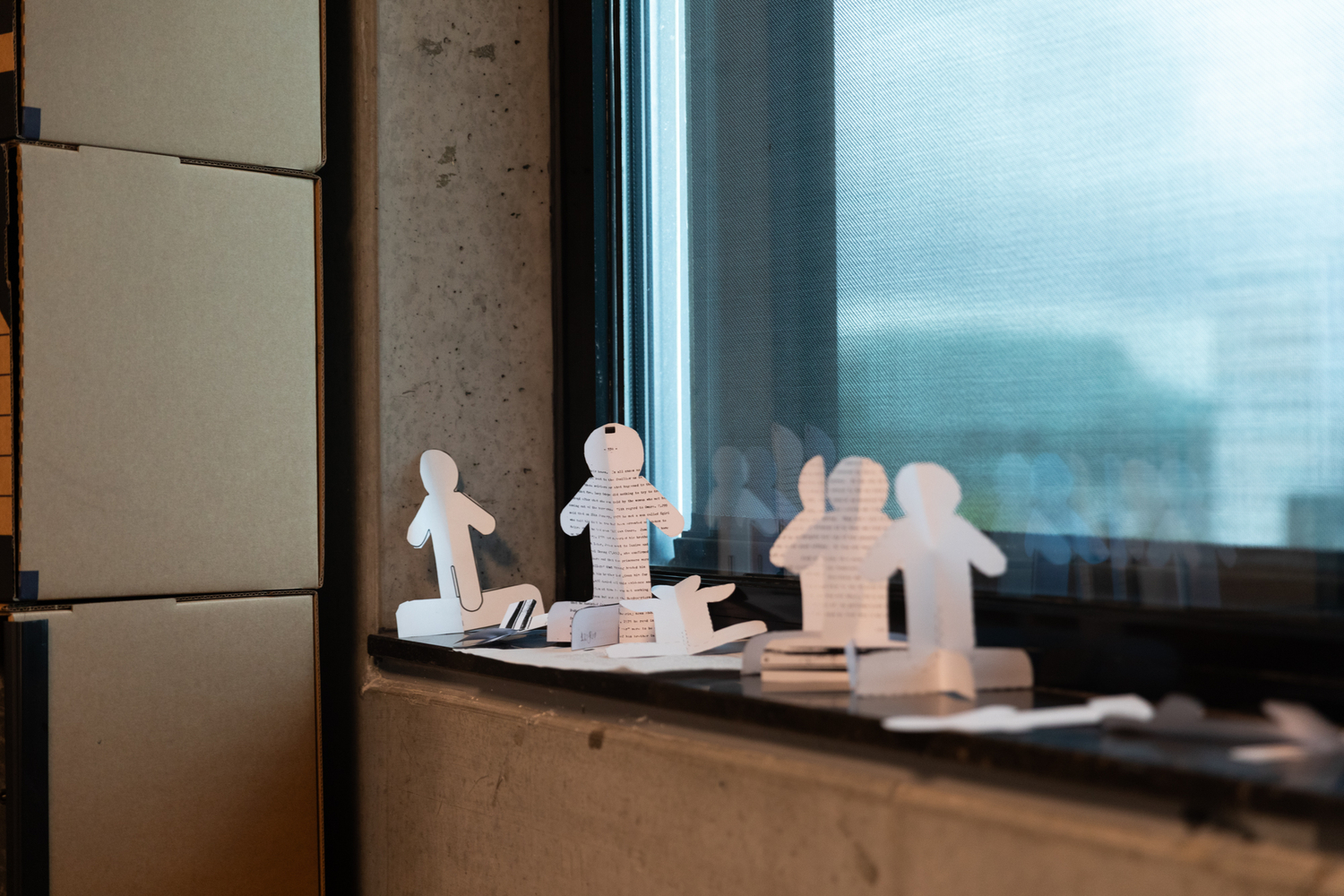
Lawil Karama
She/her
Dutch, 1986
In this exhibition, Lawil Karama transforms the Dogtime 7th floor into a space that explores perception, innocence, and social justice. Lawil Karama uses the hybridity of the solidity of organic matter that refers to robotics and/or to the in/consistency of historiography. The works form an aesthetic opposition, leaving the audience wondering what it means to participate. The exhibition is based on Kamara's research into IDI AMIN and his time in power in Uganda. It delves into regimes' profound influence on displacement, love, and activism. The exhibition's primary focus is on bringing together primary experiences, grief, violence, healing, and commemoration. The exhibition continues fluid patterns characteristic of the current era and indicative of an approaching frontier of transformation and discord, a continuation of the shards left behind by the previous generation.
How do you represent the victims of a regime, war, conflict, and other atrocities that we have witnessed in this world? Can the news reflect the people in the reported death tolls?
Both of the installations presented in this exhibition are not just static pieces of art but participatory experiences. The Artworks question how we, as outsiders of historical events, relate to forgotten stories. The approach is innocent and automatically, like a reflex, attracts participants. However, the true meaning of the act and action is left out. They require the audience to be present, to engage with them, and to contribute to their meaning through their deeds.
In Memorium: It's important for participants to understand that Karama is inviting them to contribute to the creation of a memorial for the victims of Idi Amin's regime. This memorial is a significant absence in Uganda, a country still grappling with its past. By participating in this exhibition, the opportunity to engage with the process of healing and commemoration, the audience has to contribute to it.
Lubiri Mengo: This installation is inspired by a harrowing chapter in history: the regime of Idi Amin and the infamous torture chambers in Lubiri Mengo, located in the palace of the King of Buganda. Stories circulated suggesting that entering these chambers meant an inescapable fate, with freedom found only in death.
The artwork delves into one of these grim stories and tells of a torture technique in which prisoners, locked in a circle, were given hammers and ordered to eliminate each other until only one survived: a survivor who would then receive a merciful bullet.
While acknowledging the uncertainty surrounding the truth of such stories, this installation challenges the audience to participate in a thought-provoking experience. Instead of human participants, a circle of four robot arms takes center stage. Each arm is made from clay and has a demolition hammer controlled by a PS4 joystick. The instructions remain ambiguous, but the inviting joystick beckons the participants.
The story encapsulates the haunting history and invites contemplation on the blurred boundaries between power, control, and the choices forced on individuals. The choice of robotic elements adds a layer of detachment, prompting viewers to consider the inhuman nature of such actions.
Both installations are a visual representation of the IDI Amin regime in Uganda. It explores the influences of generational trauma, the traces of colonialism, Obote (1), and the regime of Idi Amin in an imaginative contemporary society.



